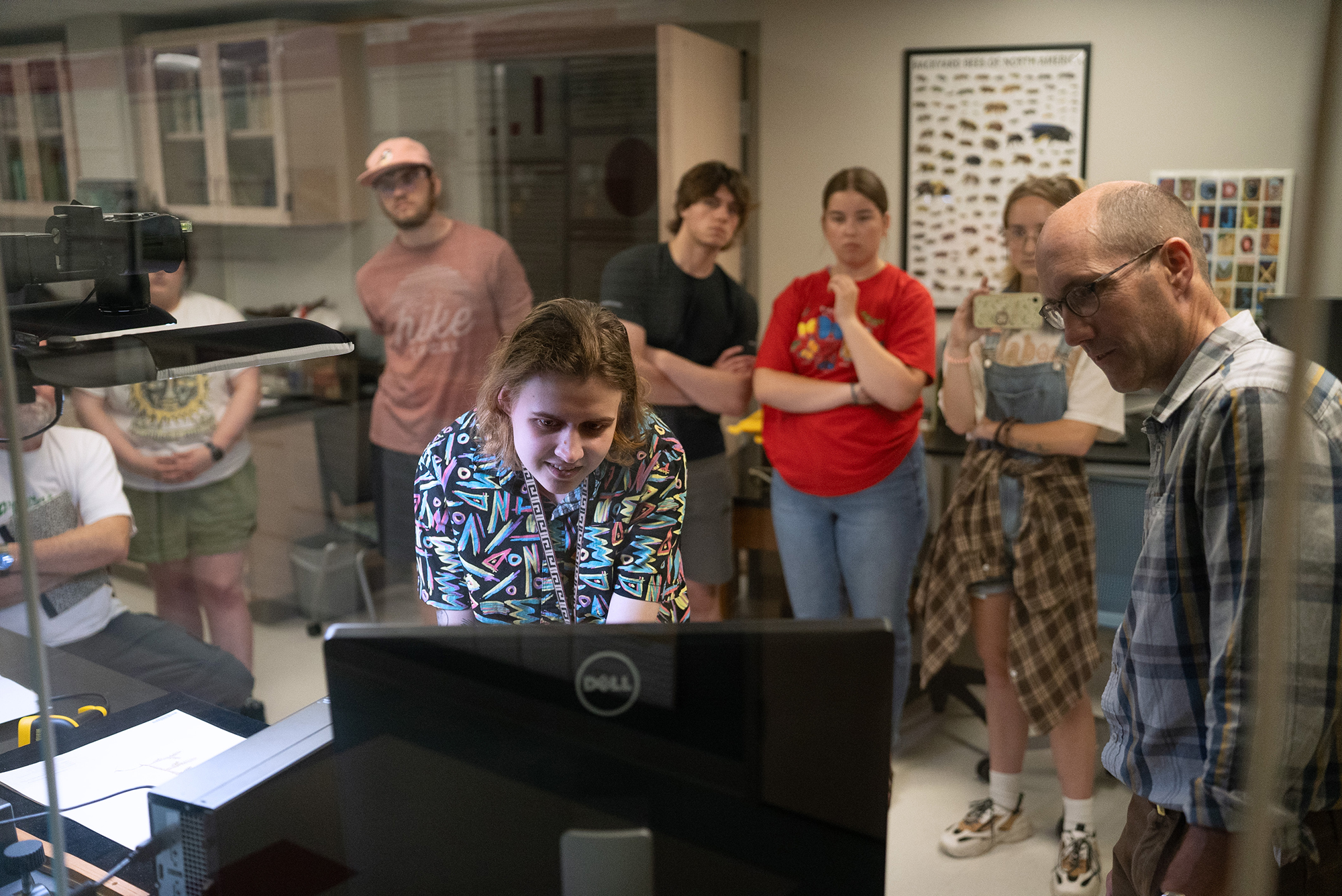
The data lying dormant as meticulously gathered and carefully stored specimens archived at the is in the process of being set free in digital form for the public.
Ĺ·ĂŔĘÓƵ’s first task in the project is nearing completion, made possible by the painstaking efforts of Ĺ·ĂŔĘÓƵ students and instructors — and a grant from the , in collaboration with the of the University of Minnesota.

Concordia is one of 10 organizations involved in the project’s third phase, which will expand the online natural resource management tool to include 2.5 million records.
Concordia’s contribution will be the complete records and scans of the material in the Welter Museum — 5,500 plants, 36,000 insects, 1,000 birds, and 2,000 mammals initially collected for educational purposes, says Dr. Joseph Whittaker, associate professor of biology and environmental and sustainability studies at Concordia.
“We’ve taken pictures with the scanner of pretty much everything we can take pictures of,” Whittaker said. “We’ve made really good progress with it.”

As such, the scanner has been turned over to Minnesota State Moorhead, another partner in the project, and Concordia is continuing to upload its images, as well as all the data associated with each one, to the database online.
Data is most scientifically useful if it is complete, including images of a specimen from multiple angles with a size and color reference included, its measurements, and details on where and when it was captured as well as who collected and prepared it.

That’s why about a dozen Concordia students have been spending hours carefully maneuvering long-dead squirrels, birds, and other preserved specimens for the camera and even more hours recording information about them.
Together, the data could be used to produce range maps for all kinds of organisms in Minnesota, or for tracking changes in plant and animal populations, ecosystems, and habitats over time.

“Just a couple years ago, nobody would have any idea what we had (at the museum), unless they physically came here and looked through the door to see what we’ve got,” Whittaker explained. “People doing research … could get Minnesota (data) all in one spot, without having to chase down a bunch of museums, which is nice.”
When Minnesota State Moorhead is finished scanning its specimens, most likely the scanner will return to the , where it will remain available to both schools for additional scanning as specimens are added to collections.
